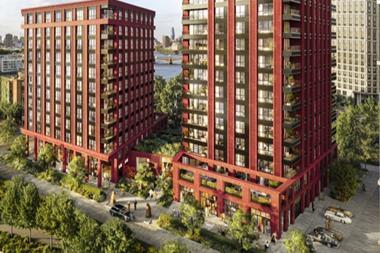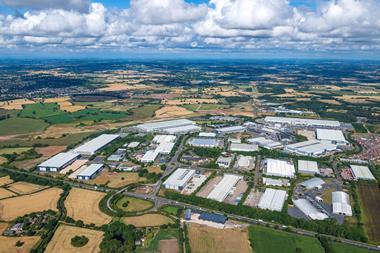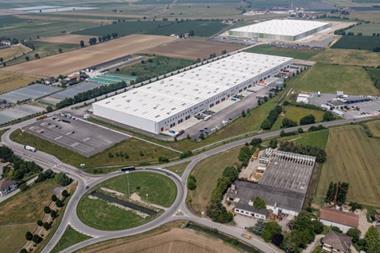Pension funds looking for a stable investment would do well to consider a sector that is too often overlooked, writes Christine Senior
Industrial multi-let is somewhat of a Cinderella segment of real estate. Small-scale, diverse industrial units let to an array of tenants, often on the edges of provincial towns and cities, they lack the size, high profile and glamour of the more visible city centre office blocks. But this very lack of visibility means they are often missed and do provide opportunities for investors who are willing to put in the time and resources needed to manage them. Secondary industrial property can attract a multiplicity of different types of business, which for an investor offers a form of protection in an economic downturn. Tenants will normally be small or medium-sized companies using the property for anything from small-scale manufacturing, or product assembly to transport and distribution of goods, and storage and warehousing. They could be blue chip companies or small family businesses.
In Europe, the UK is the leading location for this type of investment. The UK market is the most mature but it is closely followed by the Netherlands where industrial property is also fairly well established as a recognised real estate segment. Elsewhere in Europe, light industrial property is more likely to be owner occupied and, as a consequence, offer less scope for investors. But things are changing. In the last few years other markets have been opening up, with France and Germany, in particular, seeing an influx of investors as the market structure begins to transform into something similar to the UK model.In the UK, a particular factor favouring the sector is pressure on industrial land that comes from the need for new land for housing. The scarcity value is driving values upwards.
"We have a three million shortfall of houses in the UK," says Andrew Allen, head of research and strategy at Cordea Savills. "It's impossible to build that many houses without eating into industrial land. There is a natural pressure because of the housing shortfall that is looking to develop on these brownfield sites."
One investor who was closely involved with the development of the UK industrial multi-let market was Morgan Jones, joint chief executive of Hansteen Holdings. In the 1990s, he was involved in multi-let when it hardly registered at all in the consciousness of real estate investors. Over the 1990s, it grew in value and stature relative to office and retail. Jones now sees European light industrial as ripe for the same kind of growth that the UK market experienced in the 1990s.
"When we look at continental Europe we still see the same mentality there was in the UK 10 or 12 years ago," he says. "The industry is owned by the occupier and a few people are investors. It's not established as a performer like other sectors. One of the reasons we moved in is there is no reason why it shouldn't have the same kind of following as it does in the UK. The market is expanding as businesses in Europe go ‘Anglo Saxon' - they realise they don't need to own the property to carry out their business. A third of what we buy has been sale and leaseback property that had been owned by occupiers." Not all investors agree on what makes a good location for light industrial. The proximity of a transport hub, such as an airport or a port, is mentioned by some, but not all regard this as an essential feature. Though having good transport links, being close to a good road network with easy access to population centres, is crucial.
"We are quite keen on the area around Heathrow," says Sue Bjorkegren, head of property research at F&C. "It's becoming a hub for distribution and will become more so when Terminal 5 is going at full pelt. We are also keen on east coast ports. I think seaports and good motorway networks are important, railways less so."
Industrial multi-let is more resilient to downturns in the economy than, say, offices and retail. If tenants are tightening their belts in an economic downturn, they prefer to stay put in their cheap and cheerful industrial unit rather than relocating to swanky new premises elsewhere.
Jorrit Arissen, portfolio manager of European real estate securities at F&C, takes a top down view, overweighting different property sector companies according to the economic outlook.
"My feeling is, if we face a global slowdown, then these companies will be more resilient and robust than office companies," he says. "During a downturn I would favour industrial companies because the cash flows and rent levels are far more stable. Typically, with offices in cities it's more a boom-bust cycle, but that's not so true of industrial. Usually contracts are longer, the tenants don't move out that quickly so returns are more stable."
For pension funds, the attraction of industrial multi-let is the relatively stable income streams it can generate that match their cash-flow needs to meet pension payments.
"Industrial as a whole is known for providing stable income flow revenues," says Xavière Roudeix, senior analyst at Henderson Global Investors. "The income stream is stable, people stay longer than in office buildings, expenses are lower. Rent-wise you won't have the huge peaks and troughs you have in the office market, for example, so it's this stability aspect of the market that is interesting for very long term investors."
Estates with a number of tenants also offer diversification of risk, reducing the likelihood of void periods. You are not dependent on a single tenant for your source of income, which would disappear if he left, with the consequent problem of finding a replacement.
"If you have a single let, if the tenant moves out, the whole building will be empty, which could be a problem if you can't find the right tenant for it," says Roudeix. "When you have multi-let, and you have three tenants in one building, if one leaves, two thirds of the building is full, which is better on the income revenue side."
Industrial buildings are also fairly undemanding in decoration and maintenance. While offices need regular redecoration and refurbishment every few years, industrial property needs little attention, and can go for years without much need for upgrading.
Another plus for the sector is its flexibility - the landlord can gear the space more easily to meet the requirements of different tenants.
"There are always opportunities to relet space, regear leases, to move tenants around where we can drive value out of the asset," says Mike Green, fund manager at Morley Investment Management. "We have a team of three guys here. They know their tenants and they can explore the opportunities. Rather than lose a tenant from a site because they want more space, if you know your tenant line-up and you know one tenant wants more space and one less you can move them around."
But this very flexibility also counts against industrial multi-let as a sector for pension fund investors. It is very resource intensive in management time. Tenants come and go relatively frequently, and because there may be a large number of smaller tenants, managers need to keep their ear close to the ground to find out what their future requirements might be. There are also issues of making sure rents are paid regularly and on time, so it needs someone there to handle these activities. Without that, the risk is tenants can abscond overnight leaving unpaid bills. Other reasons for a close local presence are the need to keep abreast of any changes that might be happening locally, such as locally planning issues, or new developments close by, or other local issues that might affect the business.
Having someone on the ground to hover around the site, building up relationships with tenants, is an important way both to find new opportunities to add value and to avoid problems. It is often hard to know what goes on behind closed doors.
"It's a challenge to know what is happening behind the doors - you have to be careful they are not rebranding stolen cars, or growing soft drugs, using the unit as a hiding place for illegal activities," says Richard van Ovost, director of international real estate at Mn Services. "If the local manager shows up not in his suit and tie and is open to talk, he hears a lot. You have to keep your ears and eyes open in your business park."
A local manager is also useful to bring pressure to bear to make sure rents are paid when they are due. "That is why the manager should be hands on," says van Ovost. "If the rent is a bit late he can make a phone call, not just send a letter; if he talks to them they feel more under pressure to pay."
Van Ovost also says that keeping the local authority onside is a good strategy. Owners need to be aware of any new plans in the offing from the municipal authorities.
"Is the municipality aware that a lot of the labour force is working there? They should not see it as a kind of necessity but as an opportunity for the municipality. It gives you the possibility of doing things to upgrade a park if the municipality is on your side."
Awareness of the activities that are carried out in the units is also essential for other reasons. Roudeix at Henderson highlights the issue of local safety regulations that can affect use of small industrial properties if, for example, flammable substances or other dangerous chemicals are being used on site. She highlights the French market as having particularly strict regulations on this.
"Anything where you need to store dangerous goods or you need dangerous goods in your production, there is very strict regulation for these," she says. "In a single-let building, the tenant doing this activity is going to get authorisation for his own activity and he will carry responsibility. With a multi-let building, either you have one tenant who has authorisation and decides to take responsibility for other tenants, who do the same activity, or the landlord takes responsibility for all his tenants. Usually, the tenant or landlord is not keen to do that. It's a huge responsibility. If you have a very big warehouse with six different cells with six different people you can't go out every day and check someone is not using a paint he is not supposed to be using, or storing something he's not supposed to store."
Another downside is that this kind of property historically has not benefited from strong rises in rental growth, but rises more in line with inflation.
"The rental growth from industrial property is quite low," says Allen from Cordea Savills. "However, it is much less cyclical than some of the other commercial sectors. Yields in historical terms have been quite high. Income return from property is quite high so more of your return will come from income than capital growth."
It seems to be the big Dutch pension funds that are taking a lead in moving into what is for the moment a fairly marginal property sector for pension fund investors. Both PGGM and ATP have invested in Teesland's iOG's industrial property funds. And Mn Services, the Dutch company, which manages money for a number of Dutch pension funds, is an active investor in association with partners on the ground in the various countries where it is active. Cordares Real Estate, part of Cordares, which manages pension schemes for the construction and housing sector, has made an allocation to industrial multi-let, not directly but through the use of specialised funds. Director Geert de Nekker, regards it as a good diversifier. "Once you are already well diversified, you can also invest a proportion of your money in this," he says. "We have a well diversified portfolio so we can take a bit more risk by investing a little in the more unknown segments. My opinion is that, next to diversification, it provides a relatively good income return that is interesting for a pension fund because they need cash. They are more focussed on income return than capital growth."
But reservations he has centre on its relative opacity and risk. "There is still a lack of information about this sector, how tenants are moving, how large it is and so on," he says. "And the risk profile is a bit higher. The lifetime of such a building is probably a bit shorter than other buildings."












